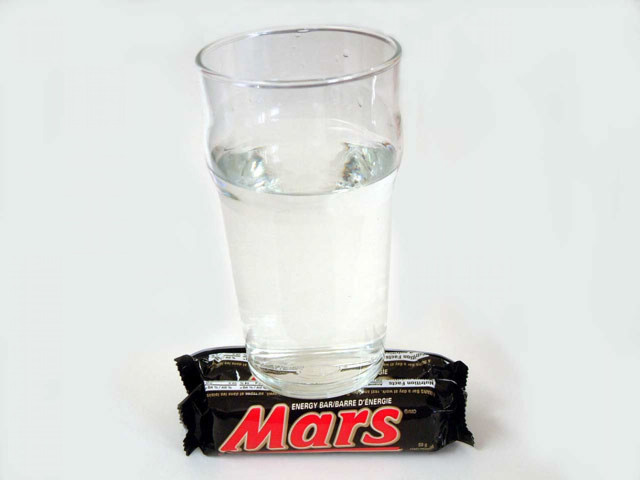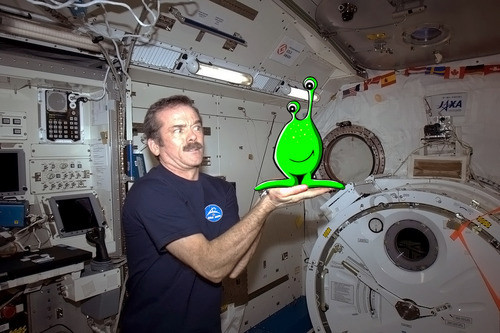April Fools' Pranks Pulled By Scientists: Flying Penguins, Dragon Fossils and Planetary Alignments

April Fools' pranks aren’t just for newspaper comics, Google and your Facebook friends that pretend to be engaged for a hot minute – scientists have a few tricks up their sleeves as well.
On Monday, Canadian astronaut and International Space Station commander Chris Hadfield posted a strange picture on Tumblr:

“I don’t know what it is or what it wants, but it keeps repeating “Sloof Lirpa” over and over. Alert the press.” (Consider the press alerted.)
Astronomy in particular seems to be especially ripe for pranksters.
On April 1, 1976, late British astronomer and TV personality Patrick Moore announced over the radio that a rare alignment between Pluto and Jupiter would increase the latter’s gravitational pull and slightly reduce Earth’s gravity. If listeners jumped in the air at exactly 9:47 a.m., Moore said, they should experience a floating sensation.
Though no such conjunction between Pluto and Jupiter took place – and such a conjunction would not actually reduce Earth’s gravity, since the pull between the Earth and the Moon is stronger than any combination of the planets --- the BBC received hundreds of calls from people who claimed to have felt lighter or even claimed they floated about that night.
Even NASA gets in on the game. On March 31, 2005, the space agency told viewers that the next Astronomy Picture of the Day would be “Water on Mars!” The next day, viewers were treated to a picture of a glass of water sitting on top of a Mars candy bar. NASA has also informed space enthusiasts in 2008 that its new space station robot was demanding to be called “Dextre the Magnificent”; in 2006, the agency joked that the Hubble Space Telescope had confirmed that the moon was made of green cheese (and also spotted the “sell-by” date). This year, NASA asked viewers to figure out the difference between the moon and a frying pan.
On April Fool’s Day in 1999, the journal Nature published a seemingly straightforward article on the paleontological debate concerning the origin of birds. However, the author quickly dives into the recent supposed discovery of a winged dinosaur named Smaugia volans. (Sound familiar?)
“The neck vertebrae carry unusually broad, flat ribs that interlock to form a flexible, armor-plated tube, rather like a metal shower-hose,” the article said. “The inside surfaces of these ribs show signs of extensive and repeated charring seen nowhere else in the skeleton, as if they had been regularly exposed to fire.”
Physicists had their laugh in 1996, when Discover Magazine announced the discovery of “the bigon,” a new fundamental particle the size of a bowling ball.
“Bigons could be responsible for ball lightning, migraines, the unexplained failures of equipment and soufflés, the spontaneous human combustion -- I don’t know, maybe earthquakes even,” (fake) physicist Albert Manqué told Discover.
The BBC got another big laugh in 2008, when a documentary crew – including Monty Python member Terry Jones – announced they’d discovered a colony of rare flying penguins:
© Copyright IBTimes 2024. All rights reserved.





















